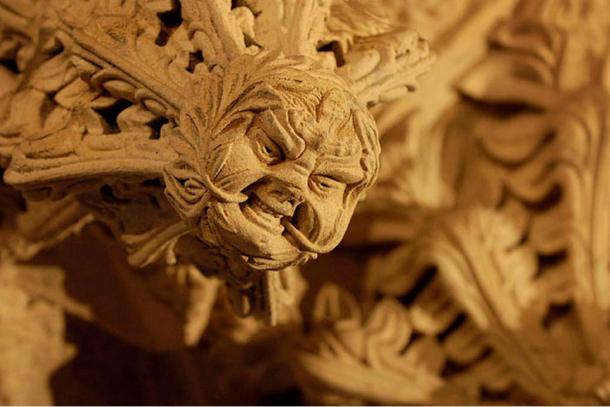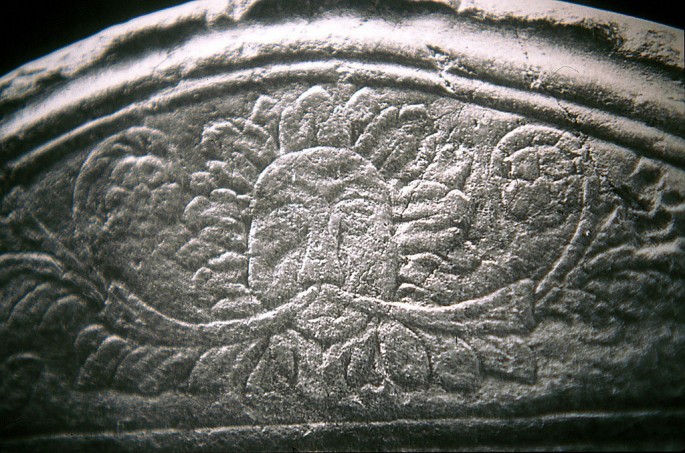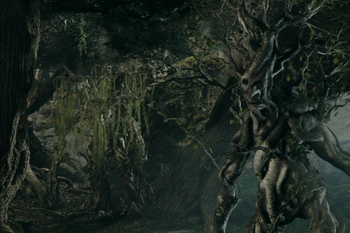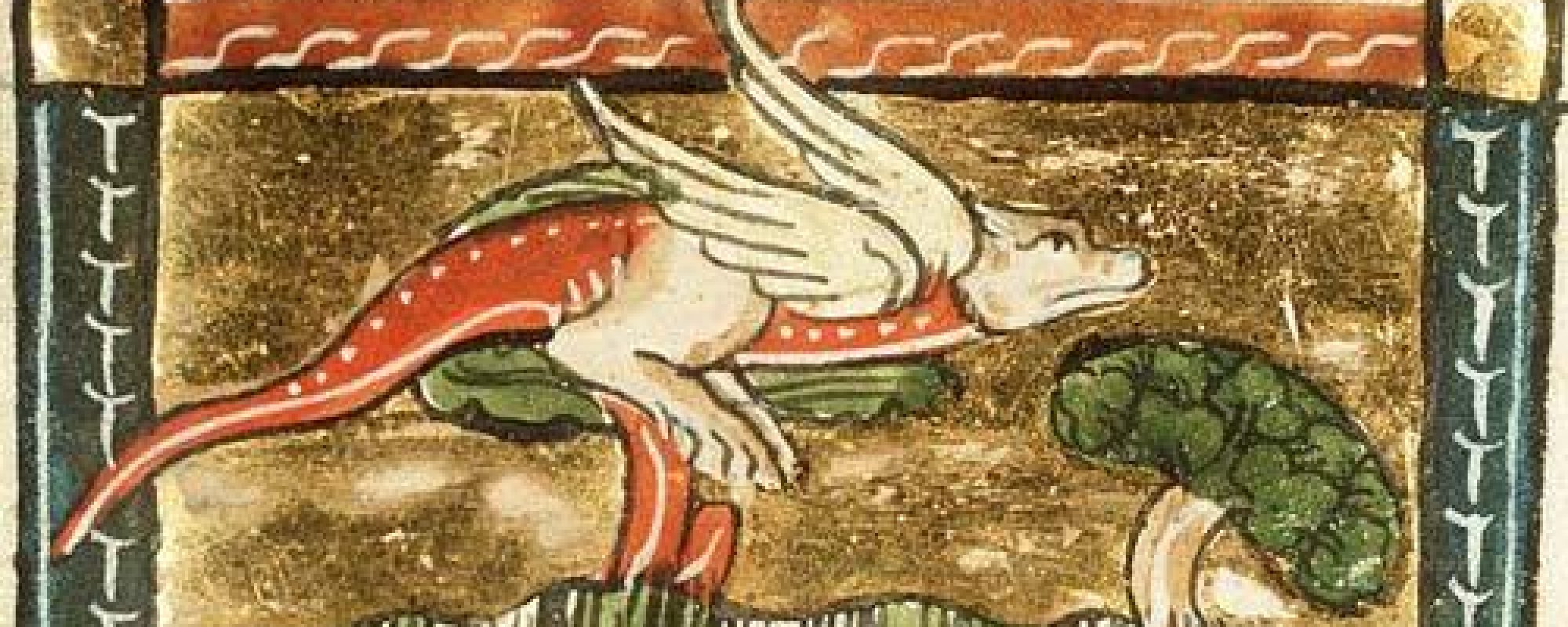Found mostly in Cathedrals and on tombs and graves, the Green Man is a face, usually sculpted, that is surrounded by or made up completely of leaves. The name Green Man was coined to this type of architecture and symbolism by Julia, Lady Raglan in 1939. While there are Green Women that have been found, these faces are almost always male. These faces can have many variations and have been sighted as far back as the fourth or fifth century. The Green Man is a myth that has grown and changed drastically throughout its time, from being a symbol of life to, in Modern times, being a Pagan god or spirit. The Green Man is affiliated with several different characters in literature, like Robin Hood, but also can be related back to the Greek gods. Some people believe that the Green Man’s reoccurring appearance throughout history could be a sign of how powerful he is as a spirit or god, but it also could be because of what the Green Man symbolizes at his core and how often that symbol is needed throughout history.


Throughout the Green Man’s elaborate history and thousands of artworks, there are three main types of images of him. There is the foliate head, the head covered/made completely of leaves. The second type is the disgorging head, the head that has foliage spewing from its mouth. The third is a head that has plants spewing from all facial orifices. Some of these images are very abstract, where the face is not immediately seen, while others make it clear to represent a man’s face either made of or growing foliage. The Green Man is often used as a representation of the life cycle, death, and fertility. Grape vines are often used in images of the Green Man, sprouting out of the skulls, which is a symbol of resurrection.

While the Green Man’s history is very unknown, but one of the first known images of the Green Man occurs on Saint Abre’s tomb which takes the imagery of the Green Man back to the fourth century. It is believed that the Green Man may have stemmed from a time even further than that into antiquity, because the symbolism the Green Man is tied to shows close relations to the Greek god of fertility and harvest, Dionysus. The Green Man also has connections to similar figures in India, and has been seen in a temple in Rajasthan. Connections have also been drawn between the Green Man and the Egyptian god, Osiris, who was typically depicted with a green face and rules over the underworld, rebirth, and regeneration. Despite these references so far back in history, the Green Man exploded as an archetype after the Dark Ages, resurrecting then as a symbol of hope for society.

The Green Man not only reoccurs throughout the architecture of thousands of Cathedrals and temples, but is also a theme that is used often in literature. The Green Man is associated with the Green Knight from Sir Gawain and the Green Knight, as well as more well-known characters like Robin Hood and Peter Pan. Green men that symbolize life, death, and rebirth are a common occurrence in modern fantasy and science fiction, like the Ents from The Lord of the Rings.

While the original meaning of the Green Man is unknown, his symbolism for hope and fertility has changed and so has his popular origin story. Today, he is widely thought to only be associated with the Celts, possibly because of how the art of him is stylized and how little from history is truly solidified about him. Now, he is regarded as a Pagan god or spirit of nature. The Green Man is said to roam the woods and be present wherever crops are growing or harvested. He seems to be almost omnipresent in modern Paganism and Wicca, said to be present when the sun shines and the seasons change. It is believed that the Green Man’s power is in his wisdom of the life cycle as a whole because he is, quite literally, a bridge between nature and humanity.
Bibliography
Livingstone, Josephine. “The Remarkable Persistence of the Green Man.” The New Yorker. June 19, 2017. https://www.newyorker.com/books/page-turner/the-remarkable-persistence-of-the-green-man.
Mastin, Luke. The Enigma of the Green Man – Theories and Interpretations. http://www.greenmanenigma.com/history.html.
“Pagan Traveler: The Mysterious Origins Of The Green Man.” Matador Network. https://matadornetwork.com/bnt/pagan-traveler-the-mysterious-origins-of-the-green-man/.
Winters, Riley. “Unraveling the Nature and Identity of the Green Man.” Ancient Origins. https://www.ancient-origins.net/myths-legends/unraveling-nature-and-identity-green-man-002620.
Annotated Bibliography
Livingstone, Josephine. “The Remarkable Persistence of the Green Man.” The New Yorker. June 19, 2017. https://www.newyorker.com/books/page-turner/the-remarkable-persistence-of-the-green-man.
This is an article written by Josephine Livingstone for the New Yorker about the persistence of the Green Man throughout history. It mentions when the Green Man was named, as well as the first sculptural reference that is known of him. This article also talks about the connections of the Green Man to various different deities, fictional characters, and briefly touches on his influence in modern times.
Mastin, Luke. The Enigma of the Green Man – Theories and Interpretations. http://www.greenmanenigma.com/history.html.
Written by Luke Mastin, The Enigma of the Green Man is an entire website dedicated to the figure of the Green Man throughout history. This website was started in 2011, and touches on every basis of the Green Man, including the influence on pop culture and what the Green Man symbolizes in modern religion. There is also a section dedicated to the history and a gallery of different depictions of the Green Man.
“Pagan Traveler: The Mysterious Origins Of The Green Man.” Matador Network. https://matadornetwork.com/bnt/pagan-traveler-the-mysterious-origins-of-the-green-man/.
“Pagan Traveler” is an article that is specifically about the Green Man’s origin. It discusses the cross-continental influence of the Green Man, as well as the different heritages that the Green Man has. It goes into the Asian heritage of this myth, which is something rare and unique to this article.
Winters, Riley. “Unraveling the Nature and Identity of the Green Man.” Ancient Origins. https://www.ancient-origins.net/myths-legends/unraveling-nature-and-identity-green-man-002620.
This article written by Riley Winters was started in 2015. This article goes in depth about the Green Man, and talks more about the specific details that reoccur in each picture of the Green Man throughout history. It talks about the types of foliage that is depicted, to how old the Green Man is presented, as well as what the Green Man has come to be.
